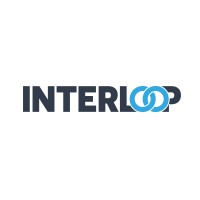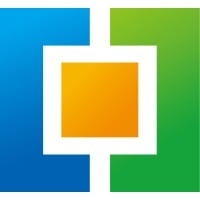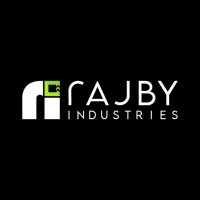
Grupo Kaltex Company Cyber Security Posture
kaltex.comGrupo Kaltex somos un conglomerado textil 100% mexicano con 90 años de experiencia en la industria, estamos integrados verticalmente a través de las Divisiones de Manufactura y Distribución de hilo, tela, fibras sintéticas, prendas de vestir y productos para el hogar. Kaltex compite nacional e internacionalmente colocando sus productos en los mercados de México, Estados Unidos, Canadá, Europa, Centro y Sudamérica y el Caribe gracias al trabajo de nuestros 18,000 colaboradores. Grupo Kaltex está conformado por las siguientes empresas: Los Complejos de Producción más modernos de Latinoamérica: • Naucalpan, Estado de México • San Juan de Río, Querétaro • Tepeji del Río, Hidalgo • Altamira, Tamaulipas • Coltejer en Colombia • Argus en Nicaragua Oficinas Comerciales en EU, México, Colombia y Nicaragua 2 Centros de Distribución y 1 empresa de Logística 420 puntos de venta con las Tiendas Melody Milano y Tiendas de Fábrica Adicional, tenemos una importante participación en el mercado de tiendas de conveniencia desde hace mas de 10 años con la operación de Círculo K, una cadena con más de 50 años de experiencia y más de 12,000 unidades en el mundo (Japón, China, Hong Kong, México, Indonesia, Guam, Macau, Estados Unidos y Canadá). Actualmente, Círculo K en México cuenta con 150 tiendas y 36 franquicias distribuidas en la DF, Estado de México, Puebla, Nuevo León, Sonora y Baja California. En 2014, fortalecimos nuestra presencia a nivel nacional, con la adquisición de 878 Tiendas Extra.
Grupo Kaltex Company Details
grupo-kaltex
10,001+ employees
16396
313
Textile Manufacturing
kaltex.com
Scan still pending
GRU_5983246
In-progress
Between 900 and 1000
This score is AI-generated and less favored by cyber insurers, who prefer the TPRM score.
 Grupo Kaltex Global Score
Grupo Kaltex Global Score.png)

Grupo Kaltex Company Scoring based on AI Models
| Model Name | Date | Description | Current Score Difference | Score |
|---|---|---|---|---|
| AVERAGE-Industry | 03-12-2025 | This score represents the average cybersecurity rating of companies already scanned within the same industry. It provides a benchmark to compare an individual company's security posture against its industry peers. | N/A | Between 900 and 1000 |
Grupo Kaltex Company Cyber Security News & History
| Entity | Type | Severity | Impact | Seen | Url ID | Details | View |
|---|
Grupo Kaltex Company Subsidiaries

Grupo Kaltex somos un conglomerado textil 100% mexicano con 90 años de experiencia en la industria, estamos integrados verticalmente a través de las Divisiones de Manufactura y Distribución de hilo, tela, fibras sintéticas, prendas de vestir y productos para el hogar. Kaltex compite nacional e internacionalmente colocando sus productos en los mercados de México, Estados Unidos, Canadá, Europa, Centro y Sudamérica y el Caribe gracias al trabajo de nuestros 18,000 colaboradores. Grupo Kaltex está conformado por las siguientes empresas: Los Complejos de Producción más modernos de Latinoamérica: • Naucalpan, Estado de México • San Juan de Río, Querétaro • Tepeji del Río, Hidalgo • Altamira, Tamaulipas • Coltejer en Colombia • Argus en Nicaragua Oficinas Comerciales en EU, México, Colombia y Nicaragua 2 Centros de Distribución y 1 empresa de Logística 420 puntos de venta con las Tiendas Melody Milano y Tiendas de Fábrica Adicional, tenemos una importante participación en el mercado de tiendas de conveniencia desde hace mas de 10 años con la operación de Círculo K, una cadena con más de 50 años de experiencia y más de 12,000 unidades en el mundo (Japón, China, Hong Kong, México, Indonesia, Guam, Macau, Estados Unidos y Canadá). Actualmente, Círculo K en México cuenta con 150 tiendas y 36 franquicias distribuidas en la DF, Estado de México, Puebla, Nuevo León, Sonora y Baja California. En 2014, fortalecimos nuestra presencia a nivel nacional, con la adquisición de 878 Tiendas Extra.
Access Data Using Our API

Get company history
.png)
Grupo Kaltex Cyber Security News
Rising Star: Mizrahi Aims to Transform Mexican Businesses at Northgate
Mr. Mizrahi, 42 years old, already was “very aggressive on goals” at the beginning of his career, said childhood friend and former manager ...

Grupo Kaltex Similar Companies

Interloop Limited
Interloop is a vertically integrated, Full Family Clothing manufacturer of Hosiery, Denim, Apparel & Seamless Activewear for world leading brands and retailers. We are the largest listed apparel company on Pakistan Stock Exchange and one of the world’s largest hosiery manufacturer, producing ov

Groupe Beaumanoir
The BEAUMANOIR Group, pioneer and leader of women’s ready-to-wear products in France, operates in 4 brands all over the world: - Cache-Cache counts more than 1400 shops with more than 500 in France / 800 in China and the remaining dispersed across the world in Europe, the Middle East and Asia.

Oriental Weavers
Oriental Weavers was inaugurated in 1979 in Cairo. Today, Oriental Weavers is considered the largest producer of machine-made rugs and carpets in the world, meeting demands in both the Egyptian market and committed to exports to more than 118 countries around the world. In Egypt, we gradually built

Hengli Group
Hengli Group, founded in 1994, is one of the China’s largest private sector companies. It’s main business including textile, petrochemical, polyester products, and real-estate development. The group also invested in thermal power plants, machinery, financial services and hotel. The Group is the larg

Rajby
Rajby Industries was established in 1972 and is one of Pakistan's prominent denim Textile and Apparel industries. We are a vertically integrated LEEDS Gold Certified company and produce 3.2M meters of fabric and 1.5M garments per month, persistently offering premium denim products for high-end custo

Amtex Limited
Amtex is one of the leading textile manufacturing groups in Pakistan . It is a vertically integrated group with operations in all sectors of the textile industry from Spinning to Stitching. It has a diversified product and market portfolio. Amtex holds a special position in the textile industry in t

Frequently Asked Questions (FAQ) on Cybersecurity Incidents
Grupo Kaltex CyberSecurity History Information
Total Incidents: According to Rankiteo, Grupo Kaltex has faced 0 incidents in the past.
Incident Types: As of the current reporting period, Grupo Kaltex has not encountered any cybersecurity incidents.
Total Financial Loss: The total financial loss from these incidents is estimated to be {total_financial_loss}.
Cybersecurity Posture: The company's overall cybersecurity posture is described as Grupo Kaltex somos un conglomerado textil 100% mexicano con 90 años de experiencia en la industria, estamos integrados verticalmente a través de las Divisiones de Manufactura y Distribución de hilo, tela, fibras sintéticas, prendas de vestir y productos para el hogar. Kaltex compite nacional e internacionalmente colocando sus productos en los mercados de México, Estados Unidos, Canadá, Europa, Centro y Sudamérica y el Caribe gracias al trabajo de nuestros 18,000 colaboradores. Grupo Kaltex está conformado por las siguientes empresas: Los Complejos de Producción más modernos de Latinoamérica: • Naucalpan, Estado de México • San Juan de Río, Querétaro • Tepeji del Río, Hidalgo • Altamira, Tamaulipas • Coltejer en Colombia • Argus en Nicaragua Oficinas Comerciales en EU, México, Colombia y Nicaragua 2 Centros de Distribución y 1 empresa de Logística 420 puntos de venta con las Tiendas Melody Milano y Tiendas de Fábrica Adicional, tenemos una importante participación en el mercado de tiendas de conveniencia desde hace mas de 10 años con la operación de Círculo K, una cadena con más de 50 años de experiencia y más de 12,000 unidades en el mundo (Japón, China, Hong Kong, México, Indonesia, Guam, Macau, Estados Unidos y Canadá). Actualmente, Círculo K en México cuenta con 150 tiendas y 36 franquicias distribuidas en la DF, Estado de México, Puebla, Nuevo León, Sonora y Baja California. En 2014, fortalecimos nuestra presencia a nivel nacional, con la adquisición de 878 Tiendas Extra..
Detection and Response: The company detects and responds to cybersecurity incidents through {description_of_detection_and_response_process}.
Incident Details
Incident 1: Ransomware Attack
Title: {Incident_Title}
Description: {Brief_description_of_the_incident}
Date Detected: {Detection_Date}
Date Publicly Disclosed: {Disclosure_Date}
Date Resolved: {Resolution_Date}
Type: {Type_of_Attack}
Attack Vector: {Attack_Vector}
Vulnerability Exploited: {Vulnerability}
Threat Actor: {Threat_Actor}
Motivation: {Motivation}
Incident 2: Data Breach
Title: {Incident_Title}
Description: {Brief_description_of_the_incident}
Date Detected: {Detection_Date}
Date Publicly Disclosed: {Disclosure_Date}
Date Resolved: {Resolution_Date}
Type: {Type_of_Attack}
Attack Vector: {Attack_Vector}
Vulnerability Exploited: {Vulnerability}
Threat Actor: {Threat_Actor}
Motivation: {Motivation}
Common Attack Types: As of now, the company has not encountered any reported incidents involving common cyberattacks.
Identification of Attack Vectors: The company identifies the attack vectors used in incidents through {description_of_identification_process}.
Impact of the Incidents
Incident 1: Ransomware Attack
Financial Loss: {Financial_Loss}
Data Compromised: {Data_Compromised}
Systems Affected: {Systems_Affected}
Downtime: {Downtime}
Operational Impact: {Operational_Impact}
Conversion Rate Impact: {Conversion_Rate_Impact}
Revenue Loss: {Revenue_Loss}
Customer Complaints: {Customer_Complaints}
Brand Reputation Impact: {Brand_Reputation_Impact}
Legal Liabilities: {Legal_Liabilities}
Identity Theft Risk: {Identity_Theft_Risk}
Payment Information Risk: {Payment_Information_Risk}
Incident 2: Data Breach
Financial Loss: {Financial_Loss}
Data Compromised: {Data_Compromised}
Systems Affected: {Systems_Affected}
Downtime: {Downtime}
Operational Impact: {Operational_Impact}
Conversion Rate Impact: {Conversion_Rate_Impact}
Revenue Loss: {Revenue_Loss}
Customer Complaints: {Customer_Complaints}
Brand Reputation Impact: {Brand_Reputation_Impact}
Legal Liabilities: {Legal_Liabilities}
Identity Theft Risk: {Identity_Theft_Risk}
Payment Information Risk: {Payment_Information_Risk}
Average Financial Loss: The average financial loss per incident is {average_financial_loss}.
Commonly Compromised Data Types: The types of data most commonly compromised in incidents are {list_of_commonly_compromised_data_types}.
Incident 1: Ransomware Attack
Entity Name: {Entity_Name}
Entity Type: {Entity_Type}
Industry: {Industry}
Location: {Location}
Size: {Size}
Customers Affected: {Customers_Affected}
Incident 2: Data Breach
Entity Name: {Entity_Name}
Entity Type: {Entity_Type}
Industry: {Industry}
Location: {Location}
Size: {Size}
Customers Affected: {Customers_Affected}
Response to the Incidents
Incident 1: Ransomware Attack
Incident Response Plan Activated: {Yes/No}
Third Party Assistance: {Yes/No}
Law Enforcement Notified: {Yes/No}
Containment Measures: {Containment_Measures}
Remediation Measures: {Remediation_Measures}
Recovery Measures: {Recovery_Measures}
Communication Strategy: {Communication_Strategy}
Adaptive Behavioral WAF: {Adaptive_Behavioral_WAF}
On-Demand Scrubbing Services: {On_Demand_Scrubbing_Services}
Network Segmentation: {Network_Segmentation}
Enhanced Monitoring: {Enhanced_Monitoring}
Incident 2: Data Breach
Incident Response Plan Activated: {Yes/No}
Third Party Assistance: {Yes/No}
Law Enforcement Notified: {Yes/No}
Containment Measures: {Containment_Measures}
Remediation Measures: {Remediation_Measures}
Recovery Measures: {Recovery_Measures}
Communication Strategy: {Communication_Strategy}
Adaptive Behavioral WAF: {Adaptive_Behavioral_WAF}
On-Demand Scrubbing Services: {On_Demand_Scrubbing_Services}
Network Segmentation: {Network_Segmentation}
Enhanced Monitoring: {Enhanced_Monitoring}
Incident Response Plan: The company's incident response plan is described as {description_of_incident_response_plan}.
Third-Party Assistance: The company involves third-party assistance in incident response through {description_of_third_party_involvement}.
Data Breach Information
Incident 2: Data Breach
Type of Data Compromised: {Type_of_Data}
Number of Records Exposed: {Number_of_Records}
Sensitivity of Data: {Sensitivity_of_Data}
Data Exfiltration: {Yes/No}
Data Encryption: {Yes/No}
File Types Exposed: {File_Types}
Personally Identifiable Information: {Yes/No}
Prevention of Data Exfiltration: The company takes the following measures to prevent data exfiltration: {description_of_prevention_measures}.
Handling of PII Incidents: The company handles incidents involving personally identifiable information (PII) through {description_of_handling_process}.
Ransomware Information
Incident 1: Ransomware Attack
Ransom Demanded: {Ransom_Amount}
Ransom Paid: {Ransom_Paid}
Ransomware Strain: {Ransomware_Strain}
Data Encryption: {Yes/No}
Data Exfiltration: {Yes/No}
Ransom Payment Policy: The company's policy on paying ransoms in ransomware incidents is described as {description_of_ransom_payment_policy}.
Data Recovery from Ransomware: The company recovers data encrypted by ransomware through {description_of_data_recovery_process}.
Regulatory Compliance
Incident 1: Ransomware Attack
Regulations Violated: {Regulations_Violated}
Fines Imposed: {Fines_Imposed}
Legal Actions: {Legal_Actions}
Regulatory Notifications: {Regulatory_Notifications}
Incident 2: Data Breach
Regulations Violated: {Regulations_Violated}
Fines Imposed: {Fines_Imposed}
Legal Actions: {Legal_Actions}
Regulatory Notifications: {Regulatory_Notifications}
Regulatory Frameworks: The company complies with the following regulatory frameworks regarding cybersecurity: {list_of_regulatory_frameworks}.
Ensuring Regulatory Compliance: The company ensures compliance with regulatory requirements through {description_of_compliance_measures}.
Lessons Learned and Recommendations
Incident 1: Ransomware Attack
Lessons Learned: {Lessons_Learned}
Incident 2: Data Breach
Lessons Learned: {Lessons_Learned}
Incident 1: Ransomware Attack
Recommendations: {Recommendations}
Incident 2: Data Breach
Recommendations: {Recommendations}
Key Lessons Learned: The key lessons learned from past incidents are {list_of_key_lessons_learned}.
Implemented Recommendations: The company has implemented the following recommendations to improve cybersecurity: {list_of_implemented_recommendations}.
References
Additional Resources: Stakeholders can find additional resources on cybersecurity best practices at {list_of_additional_resources}.
Investigation Status
Incident 1: Ransomware Attack
Investigation Status: {Investigation_Status}
Incident 2: Data Breach
Investigation Status: {Investigation_Status}
Communication of Investigation Status: The company communicates the status of incident investigations to stakeholders through {description_of_communication_process}.
Stakeholder and Customer Advisories
Incident 1: Ransomware Attack
Stakeholder Advisories: {Stakeholder_Advisories}
Customer Advisories: {Customer_Advisories}
Incident 2: Data Breach
Stakeholder Advisories: {Stakeholder_Advisories}
Customer Advisories: {Customer_Advisories}
Advisories Provided: The company provides the following advisories to stakeholders and customers following an incident: {description_of_advisories_provided}.
Initial Access Broker
Incident 1: Ransomware Attack
Entry Point: {Entry_Point}
Reconnaissance Period: {Reconnaissance_Period}
Backdoors Established: {Backdoors_Established}
High Value Targets: {High_Value_Targets}
Data Sold on Dark Web: {Yes/No}
Incident 2: Data Breach
Entry Point: {Entry_Point}
Reconnaissance Period: {Reconnaissance_Period}
Backdoors Established: {Backdoors_Established}
High Value Targets: {High_Value_Targets}
Data Sold on Dark Web: {Yes/No}
Monitoring and Mitigation of Initial Access Brokers: The company monitors and mitigates the activities of initial access brokers through {description_of_monitoring_and_mitigation_measures}.
Post-Incident Analysis
Incident 1: Ransomware Attack
Root Causes: {Root_Causes}
Corrective Actions: {Corrective_Actions}
Incident 2: Data Breach
Root Causes: {Root_Causes}
Corrective Actions: {Corrective_Actions}
Post-Incident Analysis Process: The company's process for conducting post-incident analysis is described as {description_of_post_incident_analysis_process}.
Corrective Actions Taken: The company has taken the following corrective actions based on post-incident analysis: {list_of_corrective_actions_taken}.
Additional Questions
General Information
Ransom Payment History: The company has {paid/not_paid} ransoms in the past.
Last Ransom Demanded: The amount of the last ransom demanded was {last_ransom_amount}.
Last Attacking Group: The attacking group in the last incident was {last_attacking_group}.
Incident Details
Most Recent Incident Detected: The most recent incident detected was on {most_recent_incident_detected_date}.
Most Recent Incident Publicly Disclosed: The most recent incident publicly disclosed was on {most_recent_incident_publicly_disclosed_date}.
Most Recent Incident Resolved: The most recent incident resolved was on {most_recent_incident_resolved_date}.
Impact of the Incidents
Highest Financial Loss: The highest financial loss from an incident was {highest_financial_loss}.
Most Significant Data Compromised: The most significant data compromised in an incident was {most_significant_data_compromised}.
Most Significant System Affected: The most significant system affected in an incident was {most_significant_system_affected}.
Response to the Incidents
Third-Party Assistance in Most Recent Incident: The third-party assistance involved in the most recent incident was {third_party_assistance_in_most_recent_incident}.
Containment Measures in Most Recent Incident: The containment measures taken in the most recent incident were {containment_measures_in_most_recent_incident}.
Data Breach Information
Most Sensitive Data Compromised: The most sensitive data compromised in a breach was {most_sensitive_data_compromised}.
Number of Records Exposed: The number of records exposed in the most significant breach was {number_of_records_exposed}.
Ransomware Information
Highest Ransom Demanded: The highest ransom demanded in a ransomware incident was {highest_ransom_demanded}.
Highest Ransom Paid: The highest ransom paid in a ransomware incident was {highest_ransom_paid}.
Regulatory Compliance
Highest Fine Imposed: The highest fine imposed for a regulatory violation was {highest_fine_imposed}.
Most Significant Legal Action: The most significant legal action taken for a regulatory violation was {most_significant_legal_action}.
Lessons Learned and Recommendations
Most Significant Lesson Learned: The most significant lesson learned from past incidents was {most_significant_lesson_learned}.
Most Significant Recommendation Implemented: The most significant recommendation implemented to improve cybersecurity was {most_significant_recommendation_implemented}.
References
Most Recent Source: The most recent source of information about an incident is {most_recent_source}.
Most Recent URL for Additional Resources: The most recent URL for additional resources on cybersecurity best practices is {most_recent_url}.
Investigation Status
Current Status of Most Recent Investigation: The current status of the most recent investigation is {current_status_of_most_recent_investigation}.
Stakeholder and Customer Advisories
Most Recent Stakeholder Advisory: The most recent stakeholder advisory issued was {most_recent_stakeholder_advisory}.
Most Recent Customer Advisory: The most recent customer advisory issued was {most_recent_customer_advisory}.
Initial Access Broker
Most Recent Entry Point: The most recent entry point used by an initial access broker was {most_recent_entry_point}.
Most Recent Reconnaissance Period: The most recent reconnaissance period for an incident was {most_recent_reconnaissance_period}.
Post-Incident Analysis
Most Significant Root Cause: The most significant root cause identified in post-incident analysis was {most_significant_root_cause}.
Most Significant Corrective Action: The most significant corrective action taken based on post-incident analysis was {most_significant_corrective_action}.
What Do We Measure?
















Every week, Rankiteo analyzes billions of signals to give organizations a sharper, faster view of emerging risks. With deeper, more actionable intelligence at their fingertips, security teams can outpace threat actors, respond instantly to Zero-Day attacks, and dramatically shrink their risk exposure window.
These are some of the factors we use to calculate the overall score:
Identify exposed access points, detect misconfigured SSL certificates, and uncover vulnerabilities across the network infrastructure.
Gain visibility into the software components used within an organization to detect vulnerabilities, manage risk, and ensure supply chain security.
Monitor and manage all IT assets and their configurations to ensure accurate, real-time visibility across the company's technology environment.
Leverage real-time insights on active threats, malware campaigns, and emerging vulnerabilities to proactively defend against evolving cyberattacks.




